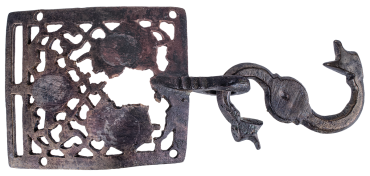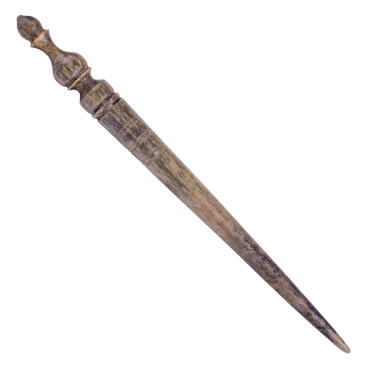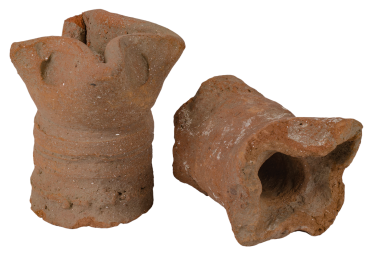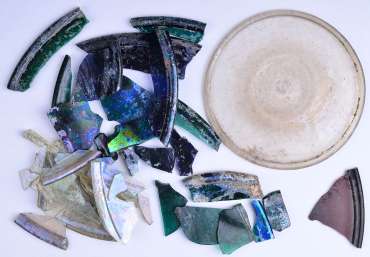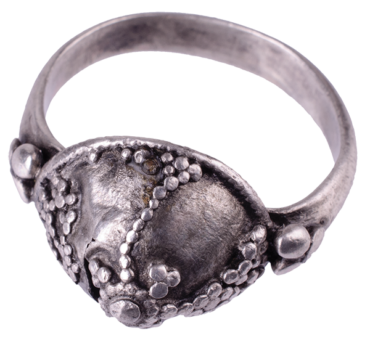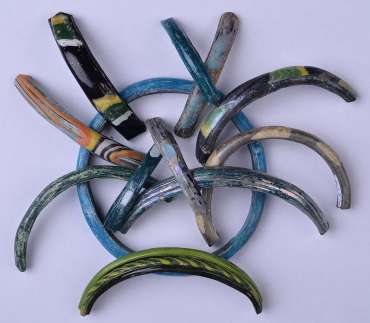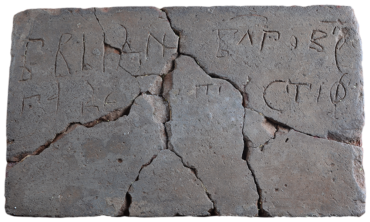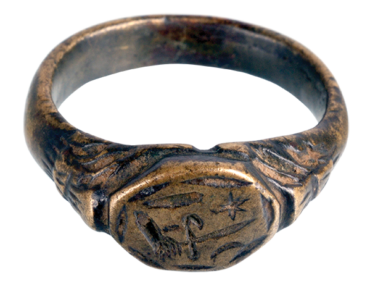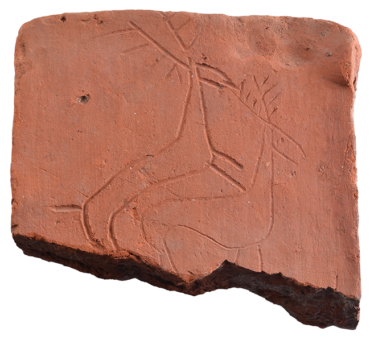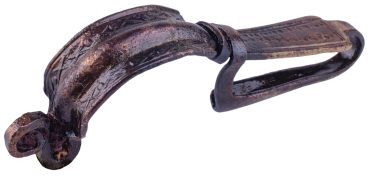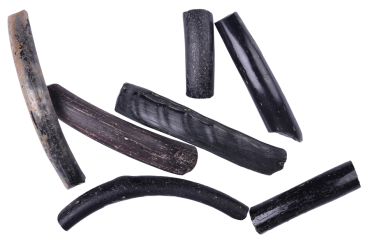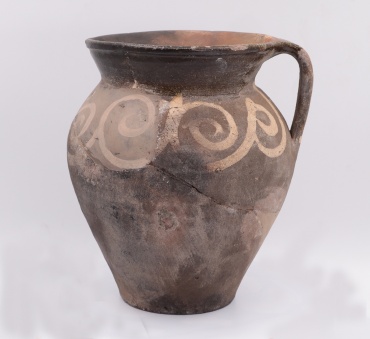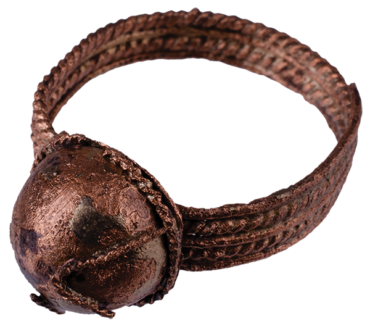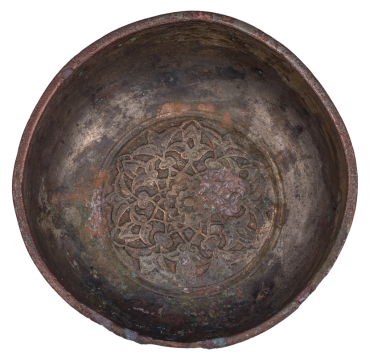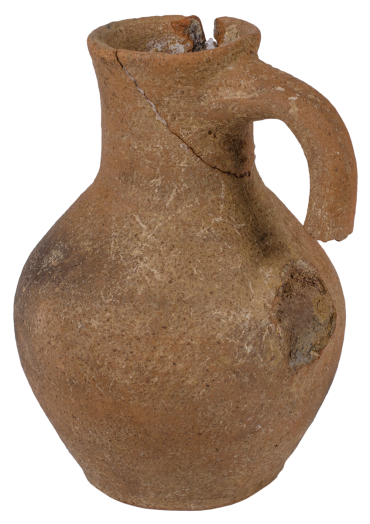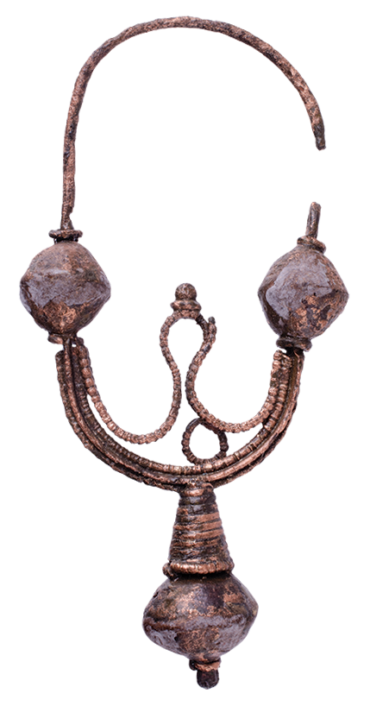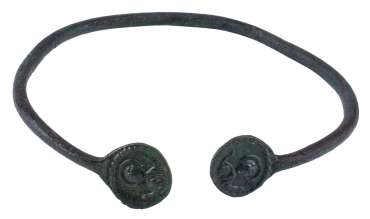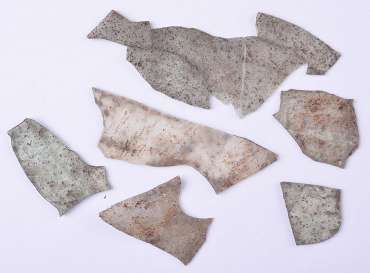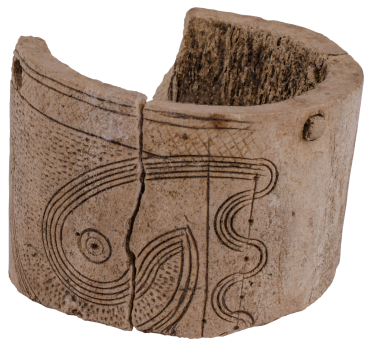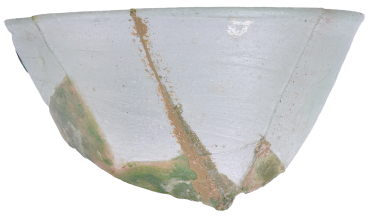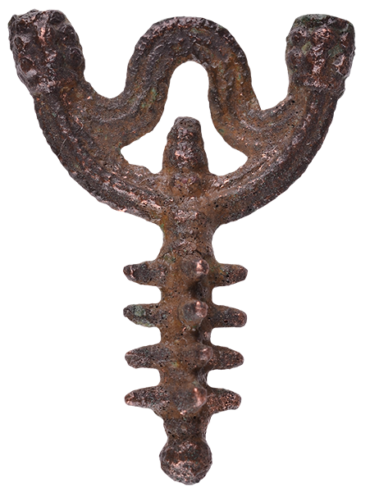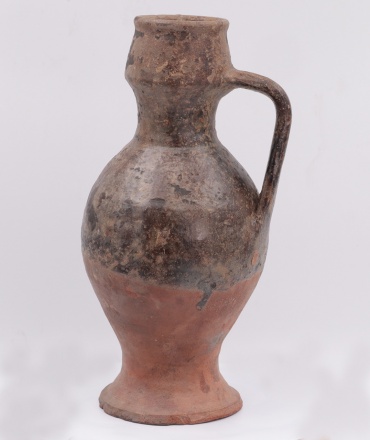THE MIDDLE AGES COLLECTION
The collection contains nearly 2000 artifacts originating from the regions of Pomoravlje, Resava and Levač. The various material, dating 6th–18th Centuries, consists mostly of pottery, weaponry, tools, jewelry and objects of personal devotion, except coins which belong to separate collection.
The collection came into being as a result of survey fieldworks undertaken during the late 1960s on various sites around the cities of Jagodina, Rekovac and Paraćin. In this period the collection was enriched by exceptionally significant finds of weapons among which stand out the knightly two-handed swords found in vicinity of the monasteries Kalenić and Tomić, as well as jewelry, ceramic vessels and coins. At the beginning of the 1970s the Museum acquired material from the first archaeological excavations of a medieval site at the foot of the Petrus fortress in the Crnica Gorge near Paraćin. Numerous objects (pottery, metal, stone, bone, antler and glass items) derive from the archeological excavations of the “Jerinin grad” site near Jagodina, carried out in 1985-1988, as well as from the early medieval settlements of the 7th, 9th and 11th Centuries, excavated in the 1980s and 1990s at multi-layered sites in Bagrdan, Majur and “Panjevački rit” in Jagodina.
The collection has been enriched by finds in excavations conducted by the Institutes for the Protection of Cultural Monuments. The most prominent are those discovered in 2006 during excavation of the “Manastirak” church near Rekovac, which had uncovered the funeral site of the high aristocrat Hrebeljan from the early 15th Century. The largest part of the collection comes from systematic excavations of the Manasija Monastery (2005-2018) conducted by the Republic Institute for the Protection of Cultural Monuments in Belgrade. A number of precious archaeological finds consisted of ca 1300 objects made of ceramics, metal, stone, glass, bone and antler have been unearthed within the monastery wall precincts, in the church itself and the churchyard of this important cultural monument, which is why the UNESCO has since 2010 included it its tentative list.
The latest acquisitions have been discovered during archaeological excavations carried out 2012-2018 at the “Jerinin grad” site in the Bagrdan Gorge (pottery, weapons, tools, jewelry).
Curator: Smiljana Dodić






